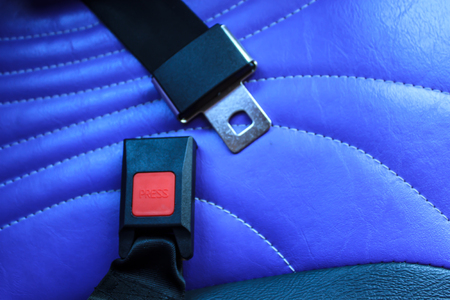Experience and research have taught the modern world that wearing a seat belt when you drive or ride in a car is an imperative safety measure. The impact of the seat belt on vehicle safety is so significant, in fact, that it is mandatory in all states to wear one while in a car as both a driver and passenger. But what about the bus?
Rarely do you hop on the metro or a school bus to a group of securely buckled in passengers. Have you ever wondered why that is? When you take a seat on a bus and move the seat belt out of the way to make yourself more comfortable, is there a split second when you question if you should be putting it on instead?
When it comes to seat belt bus safety, we’ve got the answers you need! Check out our rundown on the use of safety belts on the bus so you can make an informed decision about whether or not you strap one on.

Do all buses have seat belts?
In short, the answer is no. The only federal requirement that currently exists regarding seat belts for buses is that school buses that weigh less than 10,000 pounds are required to have lap-shoulder belts. Other laws on the subject are determined at state-level.
As of 2018, only eight states require safety belts on school buses. No state currently has any seat belt requirements for coach or city buses.
Do I have to wear a seat belt on the bus, legally?
Again, all laws concerning seat belt wearing requirements vary by state. In New Jersey, for example, all passengers on a school bus must wear a seat belt—New York State, in comparison, leaves this up to the discretion of individual school districts.
There have not generally been any state laws requiring commercial bus passengers to wear seat belts in the U.S. Recently, however, California passed a law that obligates all drivers and passengers in commercial buses that are equipped with seat belts to wear one, and they can be fined if they’re caught without it.
Why don’t all buses have them?
Buses were originally designed without seat belts because of the other safety measures that go into their construction. Buses are heavy and large, giving them a natural advantage in the event of a collision. Most other vehicles on the road are significantly smaller and faster in comparison. The slow speed of a bus gives it less momentum and results in less damage from a crash.
A fundamental concept in bus design is compartmentalization. The seats of the vehicle are installed equidistant from one another, sectioning passengers into small “compartments.” High, padded seat backs on seats that are close together will quickly stop a passenger in motion due to a sudden stop or collision—the same idea behind an airbag.
Another reason not all buses are built with seat belts is because of the hefty increase in production costs. Unless it’s a city bus, seat belts do not offer a significant enough impact on passenger safety to justify the cost. A seat belt requirement would add between $8,000 and $15,000 to the total production expenditure per bus.
Now that you’re armed with the knowledge of bus safety 101, you can decide for yourself what makes you feel safest as a passenger! You also have everything you need to choose the right bus to invest in for personal or commercial use.
Las Vegas Bus Sales has an impressive selection of new and used buses available for purchase—with options for financing and leasing too! Visit our website or call 877-456-9804 today so you don’t miss out on the great deals we have to offer.
